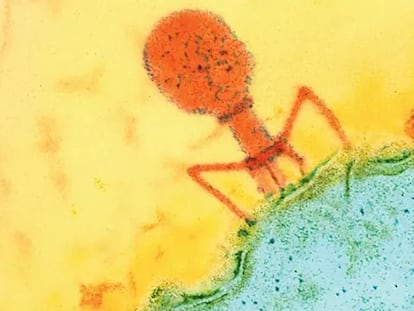Video | We are not prepared for a fungal pandemic: 19 deadly species worrying the WHO
Experts warn of the increase in infections, aggravated by a growing resistance to drugs similar to that of ‘superbugs’
Invasive fungal infections are a growing threat to public health. Each year, these pathogens cause approximately 1.5 million deaths worldwide, as many as tuberculosis and more than malaria, and cases are increasing worldwide due to multiple factors. A major one stems from the progress of modern medicine and our increased access to therapies and treatments that damage the immune system, such as chemotherapy or transplants, since this type of infection mainly affects patients in this risk group. Climate change and the coronavirus pandemic are also associated with an increase in incidence.
These conclusions are part of the list that the World Health Organization (WHO) has drawn up with 19 fungal pathogens that “represent the greatest threat to public health,” and some of which have developed resistance to drugs. It is the same step the agency took in 2017 with superbugs, whose multidrug resistance to antibiotics alerted the authorities and led the WHO to release its Bacterial Priority Pathogens List. Estimates currently place the number of deaths caused by these microorganisms at 1.27 million.
“And now we see that the same thing is happening with fungi,” says Ana Alastruey-Izquierdo, 41, a researcher at Spain’s National Center for Microbiology at the Carlos III Health Institute in Madrid. “Furthermore, with fungi there is the problem that there are not so many diagnostic tools and there are very few antifungal compounds available. So if resistance increases very quickly, we find ourselves with a serious problem on our hands, and that is why it was the right time to do it [issue the WHO alert].”
Alastruey-Izquierdo led the group of technical experts for the WHO report, which included contributions from 400 people and reviewed 6,000 documents. The authors underscored the knowledge gap surrounding fungal infections, the lack of diagnostic methods and the low investment allocated to this type of infection, less than 1.5% of all funds for infectious disease research.
The video above explains which are the fungal pathogens of greatest concern for public health.
List of priority fungal pathogens
- Critical priority group: Cryptococcus neoformans, Candida auris, Aspergillus fumigatus and Candida albicans.
- High priority group: Nakaseomyces glabrata, Histoplasma spp., Eumycetoma causative agents, Mucorales, Fusarium spp., Candida tropicalis and Candida parapsilosis.
- Medium priority group: Scedosporium spp., Lomentospora prolificans, Coccidioides spp., Pichia kudriavzeveii (Candida krusei), Cryptococcus gattii, Talaromyces marneffei, Pneumocystis jirovecii and Paracoccidioides spp.
Tu suscripción se está usando en otro dispositivo
¿Quieres añadir otro usuario a tu suscripción?
Si continúas leyendo en este dispositivo, no se podrá leer en el otro.
FlechaTu suscripción se está usando en otro dispositivo y solo puedes acceder a EL PAÍS desde un dispositivo a la vez.
Si quieres compartir tu cuenta, cambia tu suscripción a la modalidad Premium, así podrás añadir otro usuario. Cada uno accederá con su propia cuenta de email, lo que os permitirá personalizar vuestra experiencia en EL PAÍS.
¿Tienes una suscripción de empresa? Accede aquí para contratar más cuentas.
En el caso de no saber quién está usando tu cuenta, te recomendamos cambiar tu contraseña aquí.
Si decides continuar compartiendo tu cuenta, este mensaje se mostrará en tu dispositivo y en el de la otra persona que está usando tu cuenta de forma indefinida, afectando a tu experiencia de lectura. Puedes consultar aquí los términos y condiciones de la suscripción digital.
More information
Archived In
Últimas noticias
The new victims of the Republican war on Obamacare: Millions hit by soaring health insurance premiums
A country divided on migrant rights: Some US states expand protections while others restrict them
Venezuela authorizes the release of another 87 political prisoners
There is as much life left to discover on planet Earth as that which is already known
Most viewed
- David King, chemist: ‘There are scientists studying how to cool the planet; nobody should stop these experiments from happening’
- Reinhard Genzel, Nobel laureate in physics: ‘One-minute videos will never give you the truth’
- Oona Chaplin: ‘I told James Cameron that I was living in a treehouse and starting a permaculture project with a friend’
- Sinaloa Cartel war is taking its toll on Los Chapitos
- The Interoceanic Train, the Mexican alternative to the Panama Canal











































